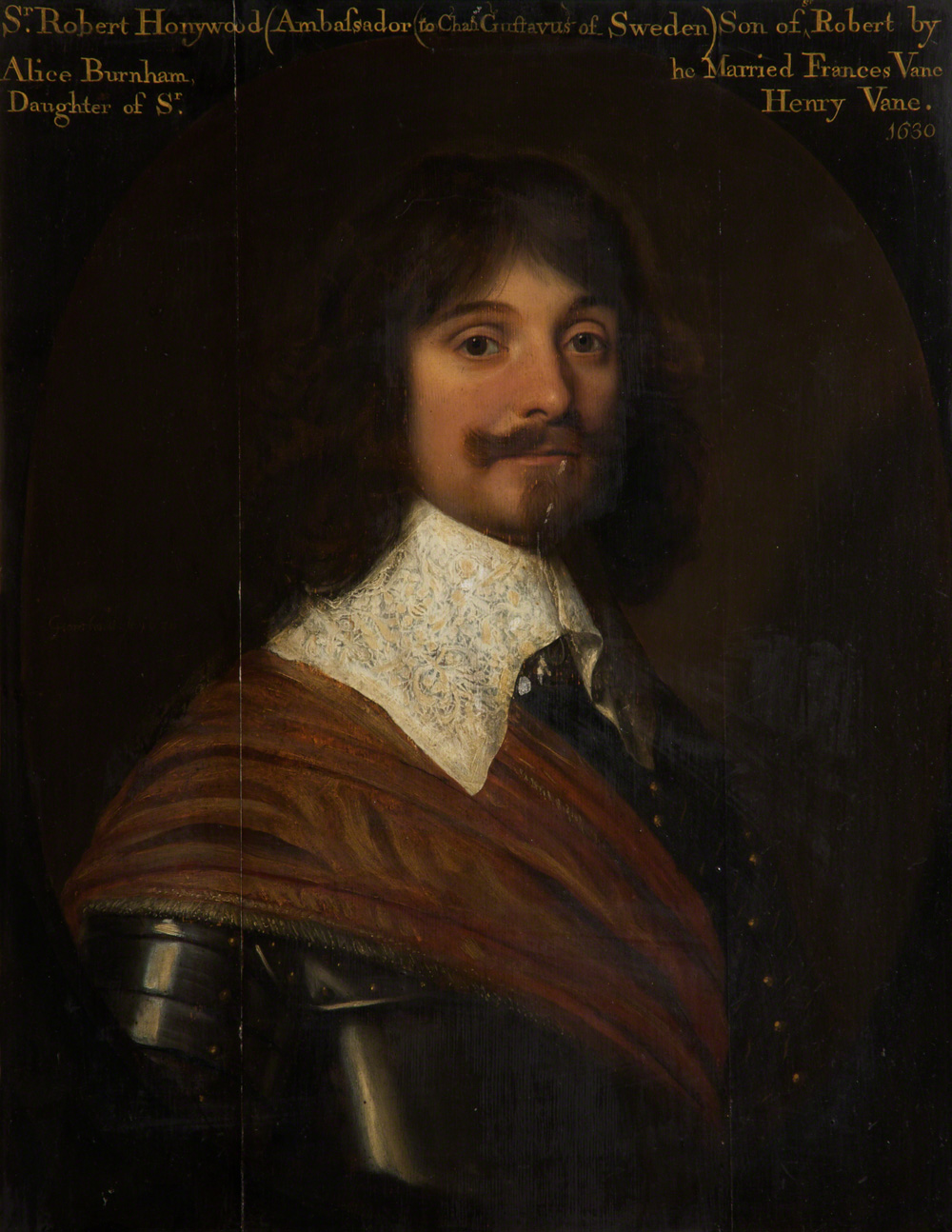4.3 Portrait of a Performer
The name of the player listed to play Jamy in The Spanish Curate and so evidently considered for Henry IV too is usually transcribed as “Rob[er]t Haywood.” But this might be Dering’s error for “Rob[er]t Honywood,” or perhaps even a misreading of Dering’s ambiguous handwriting.
There is a distinct uncertainty in the formation of the “ay” of “Haywood” that may be symptomatic of a half-conscious uncertainty.

These letter forms may be compared with the “a” and the “y” in the name of his role, Jamy.

The “a” in “Jamy” is written very much as the modern letter. Though the deletion obscures detail, the second letter in “Haywood” seems to be written as an anticlockwise loop coming off the cross-bar of “H”. This, combined with a “y” preceded by an extra minim gives a reading that might be described as intermediate between the “ay” of “Haywood” and the “ony” of “Honywood.” It is even possible that the script reads “Hoywood,” which would be “Honywood” missing a macron over the “o”. Whether a palaeographical indeterminacy or an error, the reading shows some resemblance with “Haywood” probably because Dering had written St Leger’s name almost immediately before writing “Robt Haywood”; only his own name intervenes. St Leger’s wife was neé Mary Haywood or Haward. Conjecturally, the name contaminated Dering’s inscription of “Honywood.”
There are several factors suggesting that Honywood is the person in question. First, Robert Heywood is otherwise unidentified. Specifically, he would be the highest-placed person listed in the slip who is not mentioned in Dering’s records. In contrast, Robert Honywood of Charing, Kent (1601-86) is a known person. He is mentioned several times in Dering’s Book of Expenses.
Moreover, and crucially, we know that he was involved in amateur performance of a Fletcherian play at another household.
Honywood was a diplomat and translator who lived from 1601 to 1686. He was knighted in 1627, just a few years after Dering wrote out the Spanish Curate slip. By then he was cupbearer and steward to King James’s daughter Elizabeth, the Queen of Bohemia, who since the Battle of White Mountain (1620) had been exiled from Bohemia with her husband Frederick. Their court-in-exile was in The Hague in the Low Countries, just over 100 miles across the North Sea from Kent. Honywood was soon more than a household official: he acted as ambassador for both Frederick and the Swedish warrior-king Gustavus Adolphus. In 1629 he was present with the Dutch and English forces at the siege of ’s-Hertogenbosch.1 Two years later in 1631 he was back in England to request King Charles to supply an army of 15-20,000 soldiers in support of Gustavus Adolphus.
As Gillian Wright notes, Honywood’s duties in Queen Elizabeth’s court “evidently included staging entertainments for her household—Elizabeth mentions Honywood’s participation in a production of Francis Beaumont’s and John Fletcher’s The Scornful Lady”. Wright here refers to a letter from Elizabeth to Sir Thomas Roe of 15 March 1630. Elizabeth writes: “I shall wish you heere one [=on] monday for to see a comedie the scornfull ladie acted by your Cosen Honywood and some other countriemen to passe the time a little to the king”.2 Thus if “Heywood” is an error for “Honywood” Dering would have aimed to invite a kinsman who would later continue his involvement in household performance, and who played a significant role in the European wars of religion.
In retrospect, with knowledge of his future career, his participation in Henry IV would heighten the resonance of Dering’s added references to the Crusades as an analogy of the Protestant resistance to Catholicism in Europe. It would also suggest that Dering had influence in propagating the practice of household performance of plays.

Sir Robert Honywood, Gerrit van Honthorst, c.1590–1592–1656, Photo credit: Salford Museum & Art Gallery.
The only performer in Dering’s list of whom we certainly have a pictorial image is Dering himself. But a painting of Honywood by Gerrit van Honthorst provides a depiction of a second potential performer.
The portrait is dated 1630, the year of Honywood’s production of The Scornful Lady. Honthorst was working in London in 1628, but in December of that year returned to The Hague. The portrait is therefore a product of Queen Elizabeth of Bohemia’s court in exile. Henry Vane, identified in the portrait as Honywood’s father-in-law, was another Kentishman. He served as King Charles’s emissary to Frederick and Elizabeth in 1629, and as Charles’s negotiator with Gustavus Adolphus in 1631. He was appointed Secretary of State in 1640. His son Henry (Honywood’s brother-in-law) was a leading Parliamentarian in the Civil War. He is the “S. H. V.” (Sir Henry Vane) who, with “O. C.” (Oliver Cromwell), delivered the Root and Branch bill to “S. A. H.” (Sir Arthur Hesilrige), who in turn pressed it into the hands of Dering for him to present to Parliament (Dering, Collection of Speeches, sig. I2v).
PREVIOUS: How did politics play a role in Dering’s work?
NEXT: Read about Dering’s involvement in politics.
